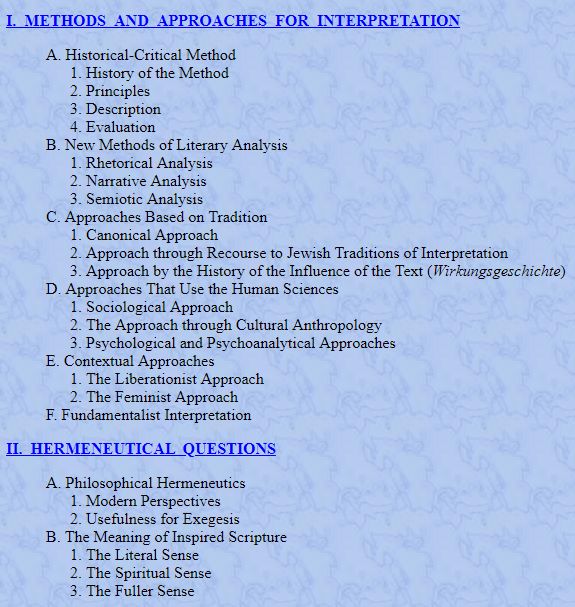
Jane Korvemaker maintains that being a Catholic woman and wife means finding our identity in Christ our savior, not in constructs of human culture.
I’ve seen several debates on social media about what it means to be a Catholic woman/wife. I’m putting in two cents from my standpoint. It might not be what you hear or see on social media, just to prepare you. I can guarantee it is authentically Catholic.
What Happened in Eden?
We need to start at the beginning. The story of Creation, before the fall, tells us something about who we are in relation to God. There are two accounts of Creation, stemming from the Yahwist tradition (~tenth century BCE) and the Priestly tradition (~sixth century BCE):Then God said, ‘Let us make humankind in our image, according to our likeness; and let them have dominion over the fish of the sea, and over the birds of the air, and over the cattle, and over all the wild animals of the earth, and over every creeping thing that creeps upon the earth.’ So God created humankind in his image, in the image of God he created them; male and female he created them. (Gen 1: 26-27, Priestly tradition)and
Then the Lord God formed man from the dust of the ground, and breathed into his nostrils the breath of life; and the man became a living being. Then the Lord God said, ‘It is not good that the man should be alone; I will make him a helper as his partner.’ So the Lord God caused a deep sleep to fall upon the man, and he slept; then he took one of his ribs and closed up its place with flesh. And the rib that the Lord God had taken from the man he made into a woman and brought her to the man. Then the man said, ‘This at last is bone of my bones and flesh of my flesh; this one shall be called Woman, for out of Man this one was taken." (Gen 1: 7, 18, 21-23, Yahwist tradition)
Just to be clear, what we read here does not indicate hierarchy of the sexes. I have often seen this to validate the claim that because woman comes from man’s rib, she must submit to him. But this is a very bad reading of Scripture. Man was also taken from the dust to be formed, but he does not submit to the dust. Also, she did not come from his foot, implying that he is above her. Nor did she come from his head that she would be above him. She came from his side; she is his peer. The ultimate interpretation from these creation stories is that we are nothing except through God’s creative act. We exist, male and female, solely by God’s will. If we submit to anyone, it is to God for his supreme act of creating us in his own image and likeness out of great love. This is what defines Catholic womanhood: our relation to God. Both in image and likeness. To clarify those terms a bit, I refer to The Christian Vision of Humanity by John R. Sachs: “The first [image] refers to a concrete form of representation, like a carved statue … The term likeness refers more specifically to an internal relationship and similarity.” It is this image and likeness are what give us our innate dignity. It is surprisingly no different than manhood and this is precisely because we find the meaning of our lives, in our biological bodies, only in God; not our relationship to each other. Together, male and female are commissioned by God to be fruitful and multiply and fill the earth and subdue it (Gen 1:28). This tells us that we are commissioned to relate to each other as male and female in procreation and also to work together to care for creation. As image and likeness of God, we are in a very real sense God’s representatives here, watching over and bringing forth the beauty of creation. We were made to naturally relate to one another and to do good work here on earth. Before sin entered into the world, this was a natural part of what it meant to be human. And even though sin has warped and overshadowed our relationship with God, we are still defined by that relationship. First and foremost, this is where we find our meaning.
What Did Jesus Do?
Jesus’ relationship with women was vastly different from others in his culture. He was very subversive in his ministry and related to women in a way that had been lost in the Fall from Eden. He approached and spoke not only with a Samaritan, but an outcast Samaritan woman (John 4:7-30, especially verse 27). He acknowledged and spoke not only to an unclean person, but a hemorrhaging woman (Mark 5:25-34). Some of his closest disciples were women (Mary Magdalene & others). These are only a few references, but the Gospels are filled with him interacting with women, and publicly. He put to rest the expectations of relationships with women were and showed us what they should be. Jesus’ interaction with women was contrary to Jewish practices. The difference is that while the cultures of the day (Jewish and Roman) referred to women in relation to the men who directed/oversaw them, Jesus related to them based on their relationship to God. And that was radical. It was shocking (see again John 4:27). It was uncomfortable. Jesus was concerned with women’s relationship with his Father (through him) outside of any relationship with men.
When Women Marry…
Do they have to submit to their husbands and leave all decisions as final in his hands? I’ve read many posts telling Catholic women exactly this and that anything else is unbiblical. Except, that’s not how the church has chosen to interpret marriage. The Catechism of the Catholic Church has a section on marriage. And while it could have pointed to St. Paul’s hierarchy in Ephesians 5:22-23, it chose instead to use verse 21: “be subject to one another out of reverence for Christ.” This tells us something about how the church interprets Scripture, and the Church has wisdom in her interpretation. The interpretation of the Bible is entrusted to the Pontifical Biblical Commission, and it requires much understanding of the many different methods, analysis, approaches, and hermeneutics of interpretation. This snapshot shows a part of the index from the document Interpretation of the Bible in the Church.

It is reasonable to acknowledge that the particular passage of Ephesians 5:22-23 has caused many issues and was therefore omitted from their discussion of marriage in the Catechism, instead emphasizing that marriage is first and foremost a mutual and sacramental gift of self-giving love. What that mutuality will look like can be as different as the persons whom enter into that sacrament together. But at the very least, when we read Ephesians 5, we need to understand that the love we ought to offer to our spouse is meant to be that complete self-giving love. It is meant to resemble the love of Christ on the cross, mutually so. We need to think on that. The Church, in her wisdom, did not use the verse that I see often used to tell women that they are not being biblical if they don’t submit to their husbands, or that their husbands have the ‘final say’ in any/every decision. If the church does not do this, we also should not be doing this. So what does it mean to be a Catholic woman and wife? It means finding our identity in Christ our savior, not in constructs of human culture. God calls each of us into intimate relationship with him, and womanhood looks an awful lot like the road to holiness, which is as vast as St. Joan of Arc, St. Perpetua, St. Thérèse of Lisieux, and St. Gianna, to name a few. All these women are our mentors in what it means to be a woman of Christ. Their common denominator was listening to God’s voice in their life and following it as best as they were able. To be a Catholic woman or wife, listen to God’s voice and harden not your hearts. This is what is central to our identity as baptized Catholic women.
What have you been told about being a Catholic woman/wife?
Copyright 2019 Jane Korvemaker; Scripture quotes from the NRSV Bible
Screenshot of index copyright Jane Korvemaker. All other photos: Canva
About the Author

Jane Korvemaker
Jane Korvemaker loves food, family, wine, and God (perhaps not in that order). She holds a Certificate in Culinary Arts, which pairs perfectly with her Bachelor in Theology. A former Coordinator of Youth Ministry, she writes from the beautiful and cold province of Saskatchewan, Canada. She works from home and takes care of her three very hard-working children. Jane regularly blogs at AJK2.ca.


.png?width=1806&height=731&name=CatholicMom_hcfm_logo1_pos_871c_2728c%20(002).png)
Comments